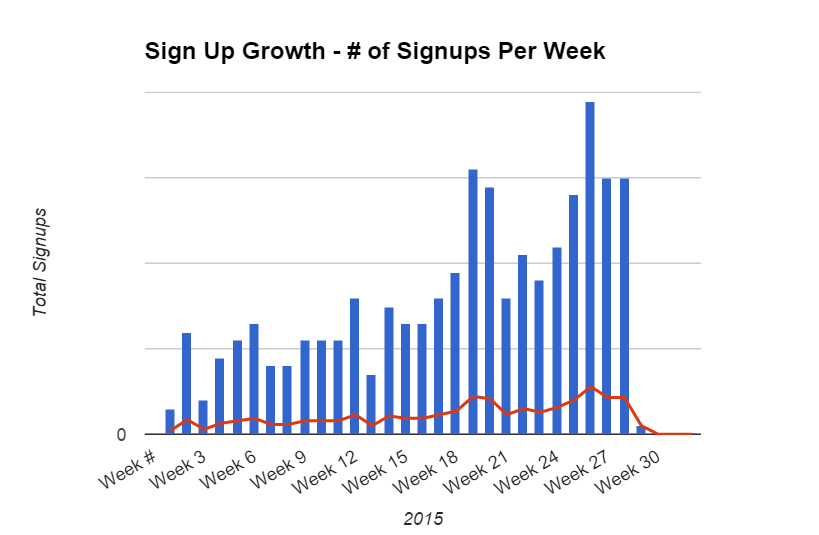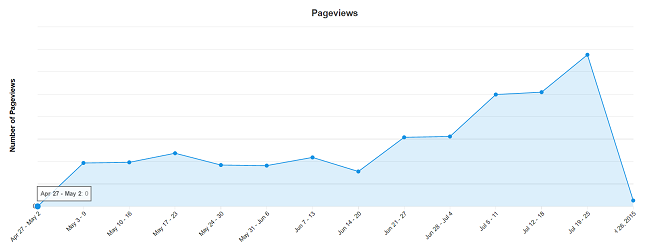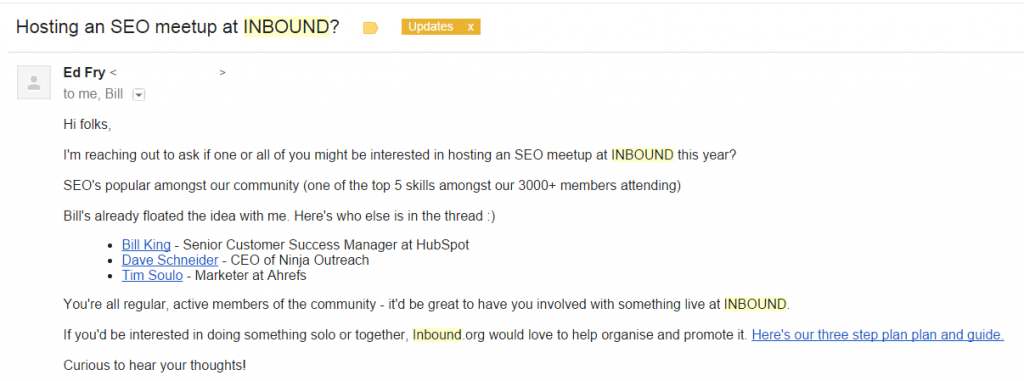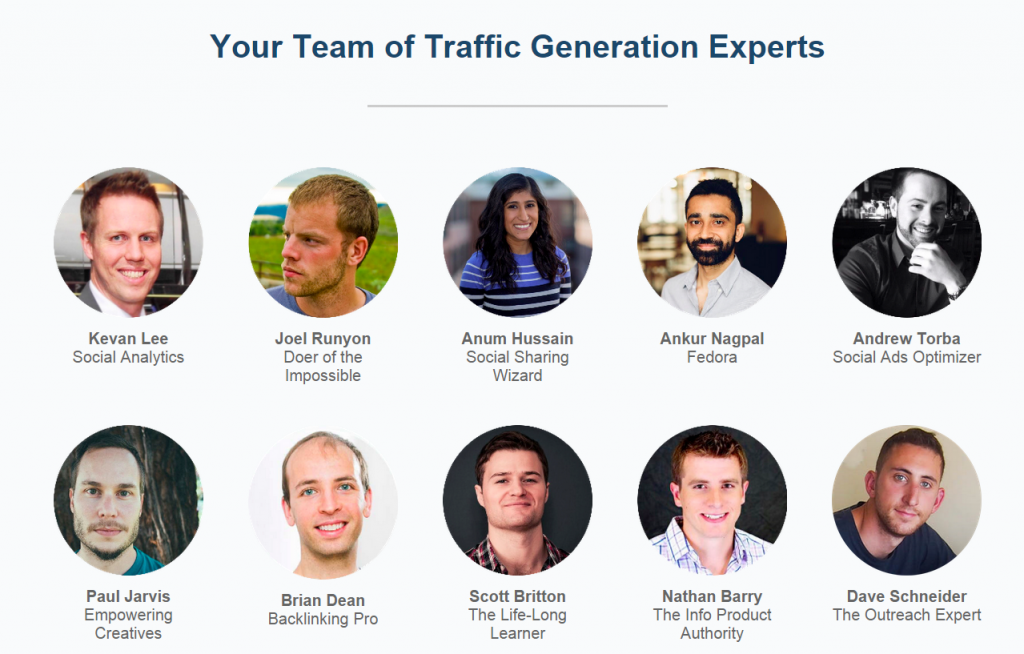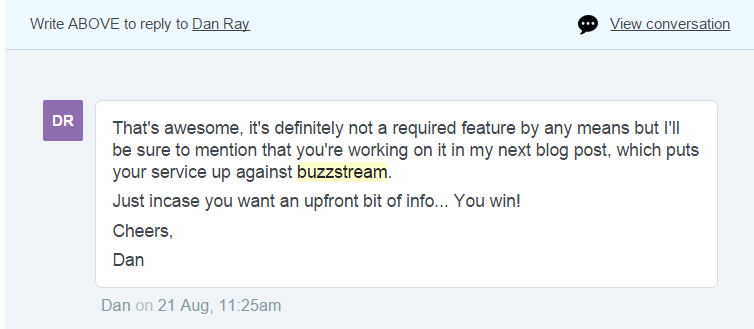Too Many Requests from Your Network
Please complete verification to access this content.
I’ve been working on NinjaOutreach for over a year now.
And every month I feel that we’re making solid progress. Of course, there are many months that I wish things were moving faster – but never did I feel like we ended the month at the same place we started it (or worse off).
Every month the business is better than it was in the last month – that’s progress.
But in the last few weeks, I’ve felt something beyond progress – traction.
Traction is a word commonly used in the startup community. You either have it, or you don’t, and trust me, you want it.
For example, I once gave a presentation about Ninja Outreach to an audience of around 50 or so people at a startup pitch event. Afterward, an angel investor asked me very straightforwardly:
“Do you have any traction?”
My answer at the time was yes, but now I realize I was confusing traction with progress. We were making progress, but we didn’t have traction.
Traction, in my opinion, is that stage beyond progress, but before product to market fit (that holy grail stage where you’ve solved a problem and need to do everything possible to add resources to the business and scale).
And while there’s no technical definition as to what traction is, I want to dive into the reasons as to why the business feels different, to the point that I feel justified in saying we’re not just making progress, but we have traction.
The Numbers Are Getting Better – Faster
At the end of the day, the most important thing is always in the numbers.
If the numbers aren’t there, no matter how many qualitative things you can point to, I just don’t see how you can confidently say you have traction.
Now numbers are very relative. To one startup 70 sign-ups might be a lot (if its enterprise software, for example). To another, it might be nothing (a social networking site).
And to another startup, sign-ups might not even be the metric that matters most of all.
However, for us, being a B2B software application, I do look at sign-ups and conversion rates, and they’ve been skyrocketing recently:
This graph is slightly outdated, but in the last few weeks we’ve had the highest number of sign-ups ever, by a multiple of nearly 2.
Traffic in the application is going way up, showing that the average user is more engaged.
We’re converting traffic to the website better than ever before. 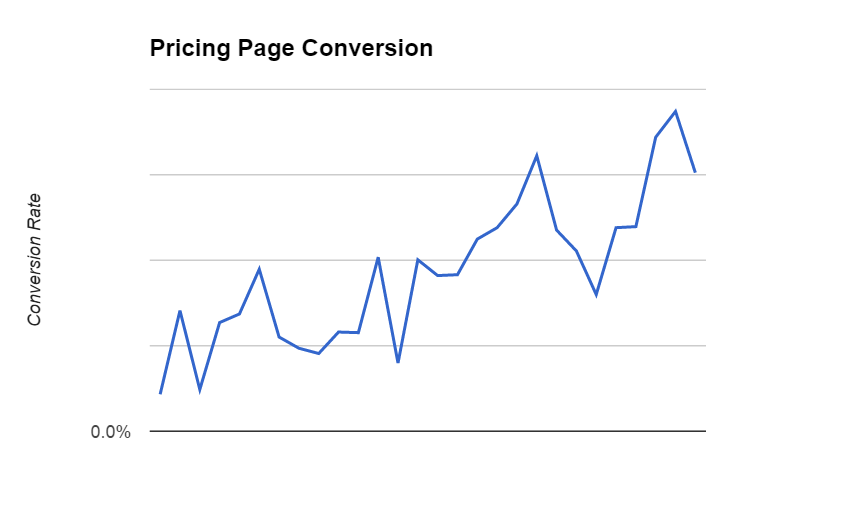
All of this, I attribute to better onboarding and frankly just a better product. We released some awesome features in late July, and they closed the gap on a lot of objections we were getting before.
In short, it’s not just that things are moving up and to the right, but they’re accelerating at a pace beyond our expectations.
People You Don’t Know, Know You
Lately, more often than usual, I’ve been reaching out to people for something unrelated to NinjaOutreach (like a guest post), only to find out that they knew who we were. For example:
I don’t really know either of these guys, just that they run nice marketing blogs and I was interested in a guest post.
However, they know about the product, and one of them is already using it (and likes it).
Now, marketing is a small world, but it’s not THAT small. You have to be developing a large enough brand to start bumping into people like this. That’s traction.
People You Don’t Know, Refer You
I’ve had a few calls recently and, when I’m thinking straight, I always try to ask how they heard about us.
For me, it’s important to know what channels are driving sign-ups.
Recently, two people mentioned that they had been referred by Brian Dean and Majestic SEO.
These guys are major players in our space. We don’t have an existing relationship with them.
The fact that they know enough about us to actually feel comfortable referring us is a huge indication we’re doing something right. After all, for these guys their brand is worth more than anything, so they don’t just go around referring anyone.
People You Don’t Know, Want To Partner With You
Even when we first started, we were getting requests to partner up.
However, as I’ve come to realize, a lot of early partnerships fizzle out quickly. It’s a lot of talk and not much action.
I wouldn’t go so far as to say that these early people are looking to take advantage of you, but they are probably being a bit opportunistic thinking they’re getting in early and can score themselves a discount on a hot new product.
More often than not, they simply don’t understand where the product is at, overestimate its capabilities, and lose interest when they see a relatively basic MVP.
In short, none of those early partnerships panned out. They were just a waste of time and I’m glad we never did anything extraordinary to try to win those accounts or fulfill those partnerships as it just would have taken us off track.
Nowadays, however, while we still run into the same issues with partnerships starting off with a bang and fizzling out, we do get more serious offers.
For example, I was recently invited to host an SEO meetup as part of Hubspot’s marketing conference INBOUND. It’s the biggest marketing conference in Boston every year, which thousands of marketers, from all over the world attend.
Having someone you don’t know reach out to you directly with an invite like this is a sign that you’re building a brand. Partnering with people from HubSpot, Inbound, and Ahrefs puts us up there with best in class software and communities.
A similar example involved me reaching out to be featured in Noah Kagan’s new course, Traffic1m, and getting featured as an Outreach Expert (see the bottom right):
Yet another example where someone’s brand is at stake, and with only 17 experts selected and a course that inevitably will draw thousands of signups, you’re in good company.
More People Are Coming Over From Competitors
Nothing makes you feel better than having someone choose you over the competitors, and that’s been happening more and more recently.
When you’re just starting out, you’ll get people to sign up for your product. Many of those people, however, sign up just because they bumped into you first. They might not even know about the other guys.
It’s the ones that proactively seek you out because they’re frustrated with the current solution (i.e the competitor), that show you you’re making the most progress.
This implies that not only are you better in their eyes, but your better enough to compensate for the added headache in having to make a switch.
More and more, we’re getting emails like this:
Now, I’m sure it works both ways. They probably have people coming to them saying, I tried NinjaOutreach, and it wasn’t any good, so I wanted to see what you guys offered.
But the thing is – we’re the underdog, which means we have nothing to lose but everything to gain when someone is even considering our product versus another that’s been on the market for years.
Conclusion
So, do we have traction?
Yes, I think we do.
Perhaps months from now I’ll look back and say – this wasn’t really traction, what we have now, that’s traction.
Who knows, really.
But it definitely feels like things are starting to tick upwards….

